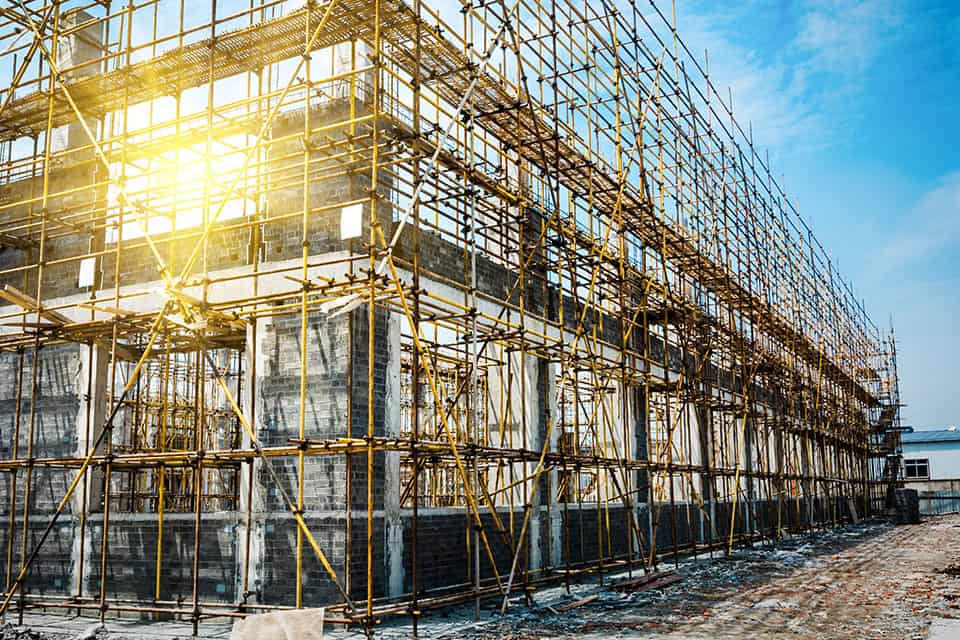Cutting-Edge Construction:
Commercial Architecture Building Technology
In the world of commercial architecture, building technology has become one of the primary tools for designing, building, and enhancing facilities. Today’s advancements not only allow projects to be completed more efficiently, they also augment the capabilities of commercial buildings and make them more humane spaces that function in sync with their surroundings.
All of this makes it easy to understand why more businesses are embracing a tech-empowered approach to their facility design and construction. Below, we review how different technologies are improving the process of developing commercial structures, and also how tech is upgrading the buildings themselves. Additionally, we take a look at how PionArch’s architectural philosophy is expressed through the use of tech in our projects.
Technology for Building
The past years have seen a massive increase in the number and variety of technologies that architects and contractors can use for designing and constructing commercial facilities. All of them streamline the architectural process, resulting in a smoother, faster progression from design conception to construction completion.
Design and Project Management Software
Here at PionArch, we consider CAD and BIM software an essential part of the architectural design process. It gives us the means to digitally draft blueprints, create realistic 3D models, and more. BIM programs remain useful even after construction has finished, as they provide invaluable information about a facility’s structure, systems, and performance.
Project management software is another staple in our toolkit. This type of program allows us to effectively track a project’s progress, assign tasks to specific team members, and keep project information in one central location.
Each of these software types saves time and labor costs, thereby reducing a project’s carbon footprint, saving money for our clients, and helping them meet important deadlines for their businesses. We believe all of these are high-value achievements in any architectural project.
AI Site and Project Assessment
At the very forefront of the architectural tech revolution is the use of artificial intelligence to assess building sites, blueprints, and a project’s feasibility.
Drones and scanners are starting to be used to process information about construction sites. AI is also starting to be used to compare project specs and blueprints to databases of past projects. This type of application enables architects to identify possible problems with designs, and also work out the best ways to address certain challenges. Such a solution gives both architects and clients peace of mind in knowing that projects can proceed smoothly.
Streamlining the code review process is another way in which technology is helping to fast-track projects and optimize their efficiency. Analytics software is now being leveraged to check the code compliance of project drawings, something that has traditionally been a long and tedious process. Not just an enhancer of speed, this type of software is able to catch compliance issues that may not be easily detectable during human review.
Using various technologies in the process of conducting a feasibility study helps assure the highest level of success for projects, with minimal potential for complications. Projects with a tech-strong feasibility study have richer, more accurate information that is useful for the entire project lifespan.
Integrating Tech in Facilities
Technology continues to be an important tool for commercial architecture even after a building has been constructed. Smart tech installations are quickly becoming a standard part of commercial environments.
The types of smart tech used in a facility can largely depend on the type of business housed there. For example, corporate offices may need meeting rooms designed to accommodate presentation and conference technologies. Many offices are also starting to incorporate automatic monitoring systems that measure employee productivity.
In retail and other consumer-frequented facilities, analytics can be used to track patterns in customer numbers, interests, and behavior. Hospitality centers and restaurants can leverage tech in a similar fashion, using it to assess guests’ tendencies and experiences.
Some commercial facilities may have security concerns which can be addressed by installing electronic access systems. Electronic keypads, ID scanners, and other tech systems are all becoming increasingly common.
Enhancing Comfort and Sustainability through Tech and Design
Commerical architecture building technology is also being used to improve building sustainability, lowering operating costs, increasing occupant comfort, and attaining greater environmental responsibility.
One way this is being accomplished is through the installation of sensor-based systems that activate lighting and air conditioning in spaces only when they are occupied, or when they otherwise need adjustment. The software used for these systems can actually grow smarter by analyzing the data it accrues, learning to recognize over time what seasons and times tend to have more or less activity. Occupants benefit by having an environment that is attuned to their needs and able to adapt to changes.
Aside from smart systems and automation, other advanced equipment can also be installed to enhance a building’s sustainability. Solar panels can be installed to provide a renewable source of electricity, while rainwater harvesters can be used to reduce a facility’s water consumption. Both examples result in lower utility costs for businesses, but they also affect the health of the local community and landscape.
With growing concerns over society’s impact on the environment, building design should aim for minimal negative impact, and, ideally, even make a positive contribution to the surroundings.
Building Technology Powers Today’s Commercial Architecture
Successful design in the 21st century starts with teams who know how to harness the power of technology. We at PionArch seize every opportunity that technology provides to give our clients more efficient, cost-effective, and targeted service.
If you need a team that can help you create a smart, modern facility for your business, feel free to reach out. We will gladly discuss your project’s needs and offer our expert advice.

